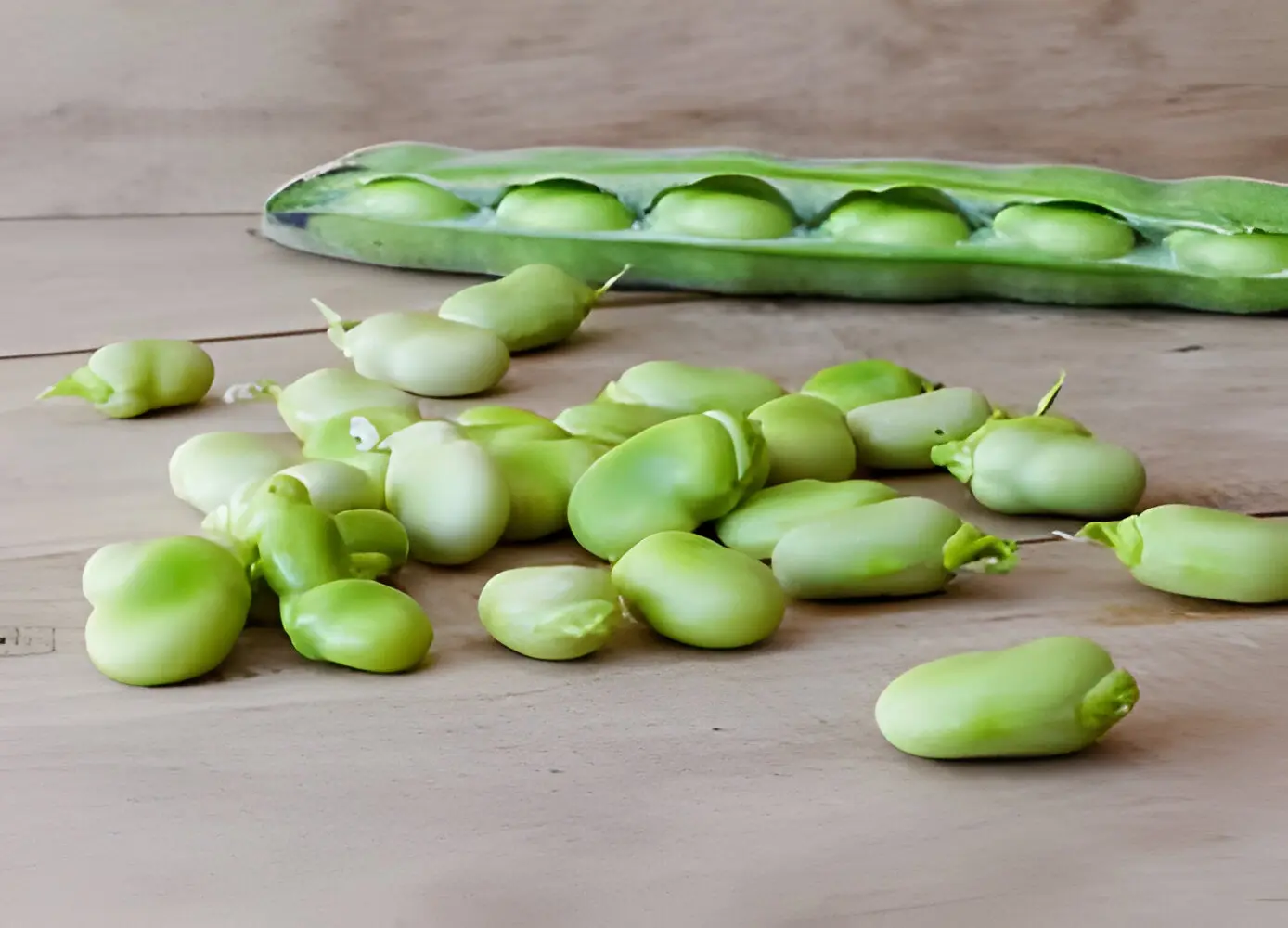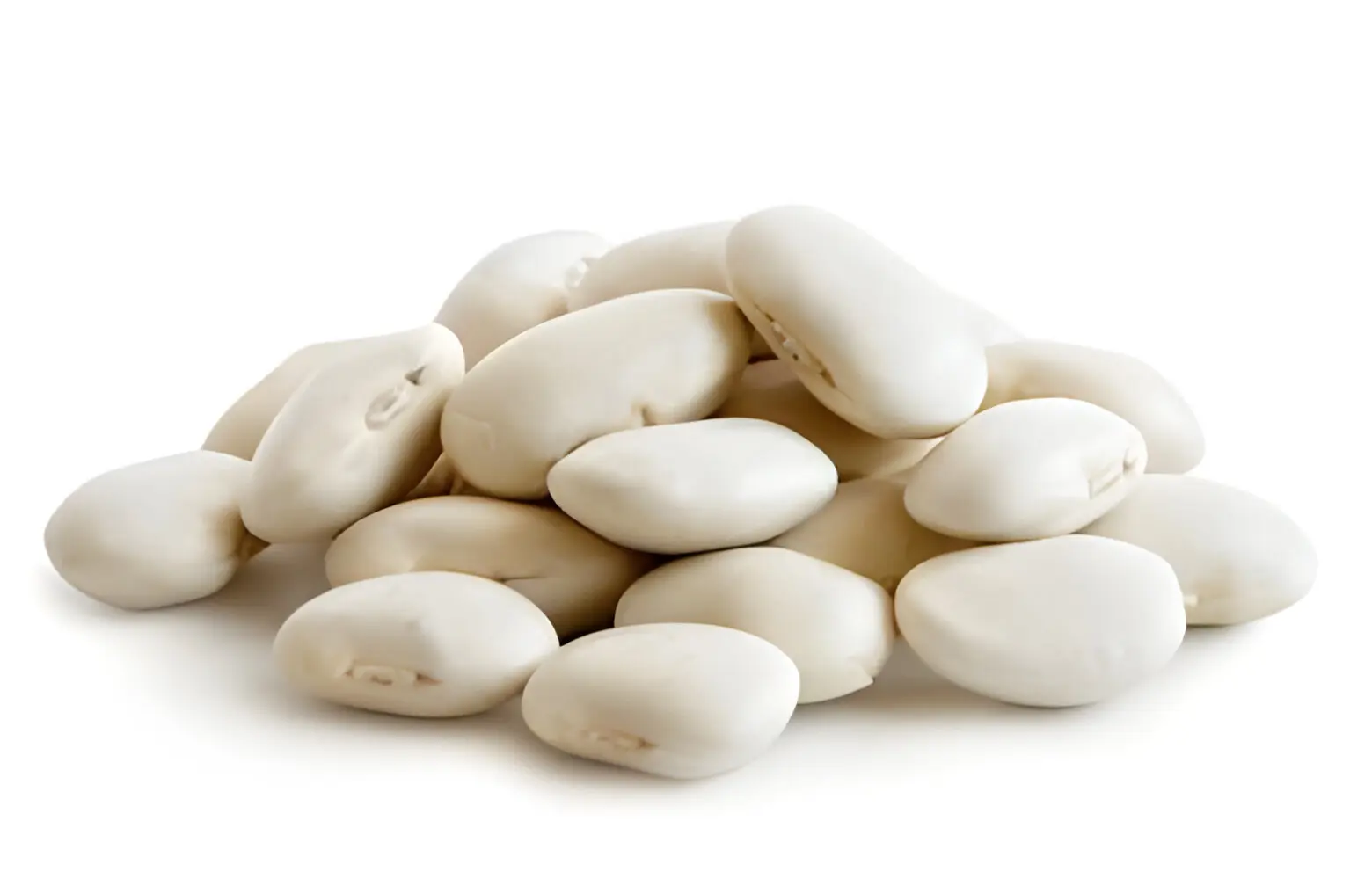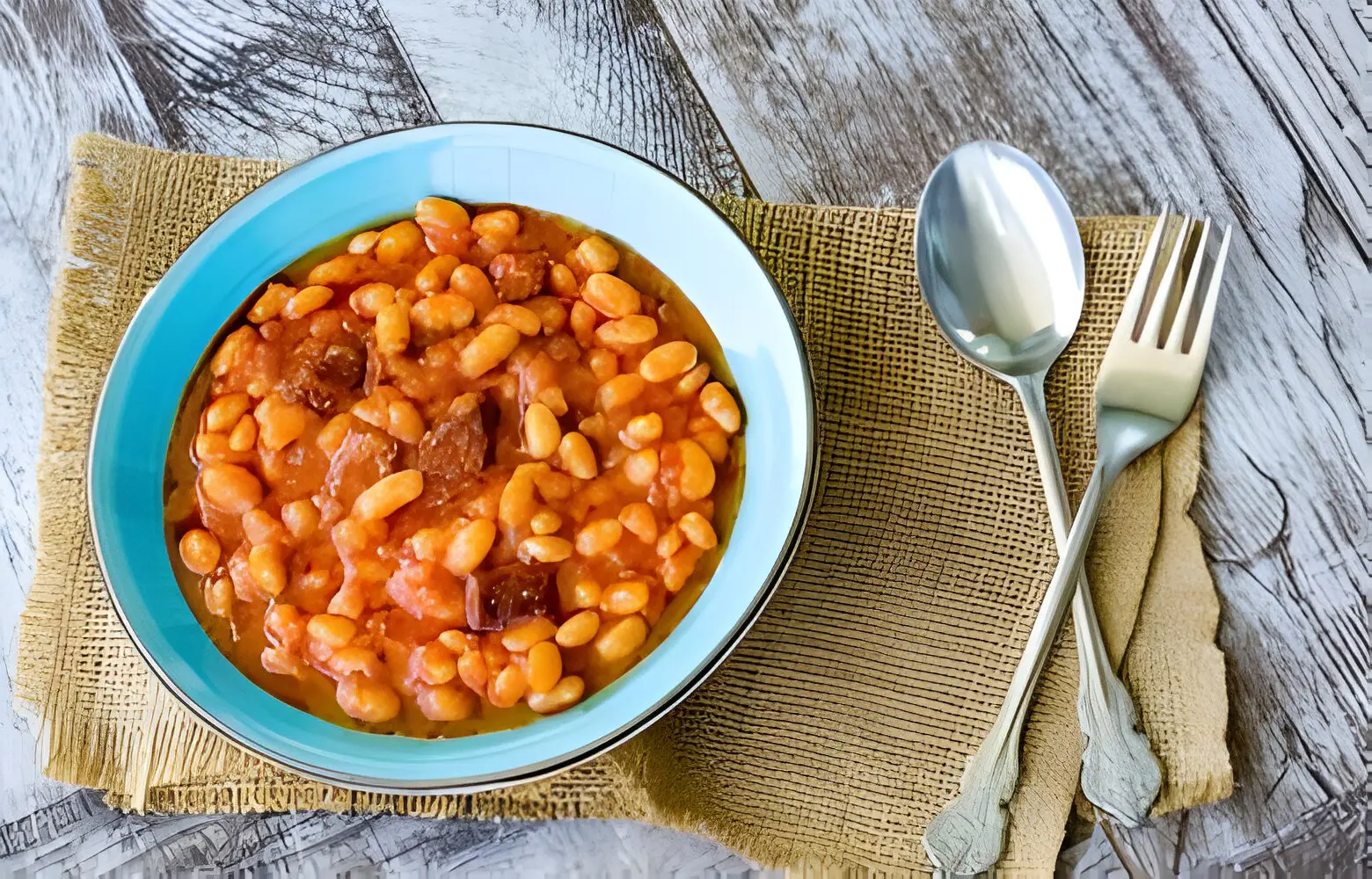In the world of legumes, lima beans, and butter beans often find themselves in the spotlight, both for their culinary versatility and nutritional value. While they may appear similar at first glance, these beans have distinct characteristics that set them apart. Understanding the disparities between lima beans and butter beans is essential for both cooking enthusiasts and health-conscious individuals. So, let’s embark on a journey to unravel the intricacies of these beloved legumes.
Part 1: Introduction to Lima Beans and Butter Beans
Lima beans and butter beans often used interchangeably in recipes, possess unique traits that warrant closer inspection. While both belong to the legume family, they differ in appearance, flavor, and culinary applications. Let’s dive deeper into the world of lima beans and butter beans to discern their nuances and appreciate their contributions to the culinary landscape.
Understanding Lima Beans and Butter Beans
Lima beans, scientifically known as Phaseolus lunatus, are flat, kidney-shaped legumes that come in various sizes and colors, including white, green, and speckled varieties. On the other hand, butter beans, also referred to as baby lima beans (Phaseolus coccineus), are larger in size with a creamy texture and a mild, buttery flavor.
What are Lima Beans?

Lima beans, renowned for their delicate flavor and creamy texture, serve as a versatile ingredient in diverse cuisines worldwide. These legumes boast a rich nutritional profile, packed with protein, fiber, and essential nutrients, making them a valuable addition to balanced diets.
What are Butter Beans?

Butter beans, often hailed for their velvety consistency and subtle buttery taste, offer a delightful culinary experience. While they share similarities with lima beans, butter beans possess their own unique flavor profile, making them a sought-after ingredient in various savory dishes and culinary creations.
Importance of Differentiating Between Lima Beans and Butter Beans
While lima beans and butter beans may be used interchangeably in some recipes, discerning individuals recognize the importance of distinguishing between these two legumes. Understanding their unique characteristics enables cooks to tailor their culinary creations and dietary choices according to specific preferences and nutritional needs.
Part 2: Nutritional Comparison
When it comes to nutritional content, lima and butter beans offer a plethora of essential nutrients that contribute to overall health and well-being. Let’s delve into their nutritional profiles to understand how these legumes stack up against each other.
Nutritional Profiles of Lima Beans and Butter Beans
Both lima beans and butter beans are nutritional powerhouses, packed with protein, complex carbohydrates, fiber, vitamins, and minerals. However, subtle differences exist between the two in terms of their micronutrient compositions.
Macronutrient Comparison
In terms of macronutrients, both provide a generous dose of protein and dietary fiber, essential for muscle repair, satiety, and digestive health. Additionally, they are low in fat, making them suitable options for individuals seeking a nutritious yet low-calorie diet.
Micronutrient Comparison
While lima beans excel in certain micronutrients like folate, potassium, and iron, butter beans shine in others such as vitamin C and magnesium. Folate is crucial for DNA synthesis and cell division, while potassium aids in maintaining fluid balance and blood pressure regulation. Iron is essential for transporting oxygen throughout the body, while magnesium supports nerve function and bone health. Both legumes contribute to meeting daily nutrient requirements and promoting overall health.
Dietary Benefits of Both Beans
Incorporating lima beans and butter beans into one’s diet offers a myriad of health benefits. Their high fiber content promotes digestive regularity and helps prevent constipation, while their protein content supports muscle growth and repair. Additionally, their low glycemic index makes them suitable for individuals managing blood sugar levels, including those with diabetes. Furthermore, the vitamins and minerals present in these legumes contribute to immune function, energy production, and overall vitality.
Part 3: Culinary Uses and Flavor Profiles
In the realm of culinary arts, both serve as versatile ingredients, lending their unique flavors and textures to a wide array of dishes. Let’s explore the various culinary applications and flavor profiles of these beloved legumes.
Culinary Applications of Lima Beans and Butter Beans
Both can be incorporated into a plethora of savory dishes, ranging from soups and stews to salads and casseroles. Their ability to absorb flavors and complement a diverse range of ingredients makes them indispensable in the kitchen.
Cooking Methods

they can be cooked using various methods, including boiling, steaming, sautéing, and pressure cooking. Boiling is perhaps the most common method, as it softens the beans and allows them to be easily incorporated into recipes. However, steaming preserves more of their nutritional content, making it a healthier cooking option. Sautéing beans with aromatics like onions, garlic, and herbs enhances their flavor profile and adds depth to dishes.
Flavor Characteristics
Lima beans are known for their slightly nutty flavor and creamy texture, which pairs well with a wide range of seasonings and ingredients. On the other hand, butter beans offer a richer, buttery taste that adds a decadent touch to soups, stews, and casseroles. Their creamy consistency makes them ideal for mashing or blending into dips and spreads.
Popular Dishes featuring Lima Beans and Butter Beans
Lima beans are commonly used in traditional dishes like succotash, a Southern American dish made with lima beans, corn, and other vegetables. They also feature prominently in Mediterranean cuisine, where they are incorporated into salads, pilafs, and hearty stews. Butter beans, with their velvety texture and mild flavor, are often used in soups, curries, and bean salads. They are also a favorite ingredient in vegetarian and vegan recipes, providing a satisfying alternative to meat.
By experimenting with different cooking methods and flavor combinations, individuals can unlock the culinary potential of them, elevating their meals with nutritious and delicious legume-based dishes.
Part 4: Physical Differences
While they may share some similarities in their nutritional profiles and culinary uses, they exhibit distinct physical characteristics that set them apart. Let’s explore the visual and textural differences between these two legumes.
Visual Distinctions
One of the most noticeable differences lies in their appearance. Lima beans are typically smaller in size and come in various colors, including white, green, and speckled varieties. They have a flat, kidney-shaped structure with a smooth exterior. In contrast, butter beans are larger and rounder with a cream-colored skin that resembles a miniature butterball. Their plump, oval shape distinguishes them from lima beans at a glance.
Texture
In addition to their visual disparities, lima beans and butter beans differ in texture. Lima beans have a tender yet slightly grainy texture when cooked, allowing them to hold their shape well in soups, stews, and salads. Their creamy consistency adds a pleasant mouthfeel to dishes without being overly mushy. On the other hand, butter beans are prized for their velvety texture, which melts in the mouth with each bite. Their smooth, buttery consistency makes them ideal for purees, dips, and spreads, as well as hearty casseroles and soups.
By observing the visual and textural distinctions between lima beans and butter beans, individuals can better understand how to incorporate these legumes into their culinary repertoire, creating dishes that showcase their unique qualities.
Part 5: Geographic Origin and Cultivation
The geographic origin and cultivation practices play a significant role in understanding their availability and growing conditions. Let’s explore where these legumes thrive and the agricultural practices involved in their cultivation.
Origin and Growing Conditions
Geographic Regions Where Lima Beans and Butter Beans Thrive
Lima beans are believed to have originated in South America, particularly in the Andean region, where they have been cultivated for thousands of years. Today, they are grown in various parts of the world with suitable climates, including the United States, Peru, Guatemala, and India. Butter beans, on the other hand, are native to Mesoamerica and have been cultivated for centuries in regions such as Mexico and Central America. They also flourish in temperate climates with ample sunlight and well-drained soil.
Cultivation Practices
Both thrive in warm, sunny climates with moderate rainfall and fertile soil. They are typically planted in the spring after the danger of frost has passed and require regular watering to maintain soil moisture levels.
Part 6: Health Benefits and Potential Drawbacks
The consumption of them offers a multitude of health benefits, thanks to their rich nutritional profiles. However, it’s essential to consider any potential drawbacks associated with these legumes. Let’s explore the positive impact on health as well as possible considerations when incorporating both into one’s diet.
Impact on Health
Health Benefits of Lima Beans
Lima beans are a nutrient-dense food, rich in protein, dietary fiber, vitamins, and minerals. They provide a steady source of energy, promote digestive health, and support cardiovascular function. The high fiber content of lima beans helps regulate blood sugar levels, lower cholesterol, and prevent constipation. Additionally, their abundance of folate contributes to healthy cell division and DNA synthesis, making them particularly beneficial for pregnant individuals.
Health Benefits of Butter Beans
Similarly, butter beans boast an impressive nutritional profile, offering protein, fiber, vitamins, and minerals essential for overall health. Their low glycemic index makes them suitable for individuals managing diabetes, while their magnesium content supports nerve function and bone health. Additionally, the vitamin C found in butter beans contributes to immune function and collagen synthesis, promoting healthy skin and tissue repair.
Possible Side Effects and Precautions
While they offer numerous health benefits, individuals with certain dietary restrictions or medical conditions may need to exercise caution. These legumes contain compounds called lectins, which can cause digestive discomfort in some people when consumed in large quantities or undercooked. Additionally, individuals with legume allergies should avoid lima beans and butter beans to prevent allergic reactions.
By incorporating them into a balanced diet, individuals can reap the nutritional rewards while minimizing any potential drawbacks. Moderation and variety are key to enjoying the health benefits of these legumes without adverse effects.
Part 7: Environmental Impact and Sustainability
Understanding the environmental impact and sustainability of agricultural practices associated with lima beans and butter beans is crucial for promoting responsible consumption and supporting eco-friendly farming methods. Let’s explore how these legumes contribute to environmental sustainability and what steps can be taken to minimize their ecological footprint.
Sustainability Considerations
Environmental Footprint of Lima Beans and Butter Beans
They are relatively environmentally friendly crops compared to certain animal-based foods. They require fewer resources like water and land to produce protein and are less carbon-intensive than livestock farming. However, monoculture farming practices and reliance on synthetic fertilizers and pesticides can lead to soil degradation, biodiversity loss, and water pollution if not managed sustainably.
Sustainable Farming Practices
To mitigate the environmental impact of lima bean and butter bean production, farmers can adopt agroecological practices such as crop rotation, intercropping, and integrated pest management. These methods enhance soil fertility, promote natural pest control, and reduce the need for synthetic inputs. Additionally, transitioning to organic farming practices eliminates the use of harmful chemicals, benefiting both the environment and consumer health.
Consumer Choices
As consumers, individuals can support sustainable agriculture by purchasing organically grown or locally sourced lima beans and butter beans whenever possible. Choosing certified organic products ensures that farming practices adhere to strict environmental standards, minimizing the use of synthetic inputs and promoting biodiversity conservation. Furthermore, reducing food waste by storing and consuming beans responsibly helps minimize resource consumption and greenhouse gas emissions associated with food production and transportation.
Part 8: Cooking Tips and Recipes
Unlock the culinary potential of lima beans and butter beans with these helpful cooking tips and mouthwatering recipes. Whether you’re a seasoned chef or a kitchen novice, these versatile legumes offer endless possibilities for creating nutritious and delicious dishes.
Cooking Tips and Recipe Ideas
Tips for Cooking Lima Beans and Butter Beans
- Soak Before Cooking: To reduce cooking time and improve digestibility, soak dried lima beans and butter beans in water overnight before cooking.
- Season Liberally: Enhance the flavor of beans by seasoning them with herbs, spices, garlic, and onions during cooking.
- Add Acid: A splash of lemon juice or vinegar brightens the flavor of beans and helps tenderize them during cooking.
- Experiment with Texture: Mash cooked beans for dips and spreads, or leave them whole for soups, stews, and salads.
Delicious Recipes to Try
- Mediterranean Bean Salad
- Combine cooked lima beans, diced tomatoes, cucumbers, red onions, olives, and feta cheese in a bowl.
- Toss with olive oil, lemon juice, garlic, oregano, salt, and pepper to taste.
- Serve chilled as a refreshing side dish or light lunch option.
- Creamy Butter Bean Soup
- Sauté onions, carrots, and celery in olive oil until softened.
- Add cooked butter beans, vegetable broth, diced potatoes, and thyme to the pot.
- Simmer until the vegetables are tender, then blend the soup until smooth.
- Stir in a splash of cream or coconut milk for extra richness before serving.
- Lima Bean Casserole
- Cook lima beans until tender, then combine with cooked quinoa, spinach, mushrooms, and shredded cheese.
- Transfer to a baking dish and top with breadcrumbs mixed with melted butter or olive oil.
- Bake until golden and bubbly for a comforting and nutritious main dish.
By incorporating these cooking tips and recipes into your culinary repertoire, you can elevate your meals with the wholesome goodness of lima beans and butter beans. Get creative in the kitchen and enjoy the delicious flavors and textures these legumes have to offer.
Part 9: Common Misconceptions
Dispelling myths and misconceptions about lima beans and butter beans is essential for understanding their nutritional value and culinary versatility. Let’s address some common misunderstandings surrounding these legumes and clarify any misconceptions.
Dispelling Myths about Lima Beans and Butter Beans
Addressing Common Misconceptions
- Myth: Beans are high in carbohydrates and should be avoided on a low-carb diet.
- Fact: While beans do contain carbohydrates, they are also rich in fiber and protein, which help regulate blood sugar levels and promote satiety. Incorporating beans into a balanced diet can support weight management and overall health.
- Myth: Lima beans and butter beans are bland and unappetizing.
- Fact: they have subtle yet distinctive flavors that can be enhanced with proper seasoning and cooking techniques. By pairing them with flavorful ingredients and spices, you can create delicious and satisfying dishes that showcase the natural goodness of these legumes.
- Myth: Beans cause gas and bloating.
- Fact: While beans may cause gas in some individuals due to their high fiber content, soaking dried beans before cooking and gradually increasing bean intake can help reduce digestive discomfort. Additionally, cooking beans thoroughly and incorporating digestive aids like herbs and spices can minimize gas production.
- Myth: Canned beans are inferior to dried beans in terms of nutrition and flavor.
- Fact: Canned beans are a convenient and nutritious option for busy individuals and can be just as nutritious as dried beans if chosen wisely. Look for canned beans with no added salt or preservatives and rinse them thoroughly before use to remove excess sodium.
By dispelling common myths and misconceptions about lima beans and butter beans, we can appreciate these legumes for their nutritional value, culinary versatility, and potential to enhance a wide range of dishes.
Next, let’s address frequently asked questions about lima beans and butter beans in Part 10.
Part 10: Frequently Asked Questions
Explore answers to common queries about lima beans and butter beans to deepen your understanding of these versatile legumes and make informed choices in your culinary endeavors.
FAQs
What is the nutritional difference between lima beans and butter beans?
Lima beans tend to be slightly higher in protein and fiber compared to butter beans. Additionally, lima beans are richer in folate, potassium, and iron, while butter beans contain more vitamin C and magnesium. Both legumes offer valuable nutrients essential for overall health and well-being.
Are lima beans and butter beans interchangeable in recipes?
While they share some similarities, they have distinct flavors and textures that may affect the outcome of a recipe. Lima beans are known for their delicate flavor and creamy texture, while butter beans offer a richer, buttery taste. Depending on the dish, one may be more suitable than the other, but they can often be used interchangeably with slight adjustments to seasoning and cooking methods.
Can lima beans and butter beans be consumed by people with dietary restrictions?
they are generally suitable for various dietary restrictions, including vegetarian, vegan, gluten-free, and dairy-free diets. However, individuals with certain conditions such as G6PD deficiency may need to avoid consuming fava beans, a type of broad bean that can trigger hemolytic anemia. Consulting with a healthcare professional or registered dietitian can provide personalized guidance on incorporating them into a specific dietary plan.
By addressing these frequently asked questions, we aim to empower individuals to make informed decisions about incorporating both into their diets and culinary creations.



